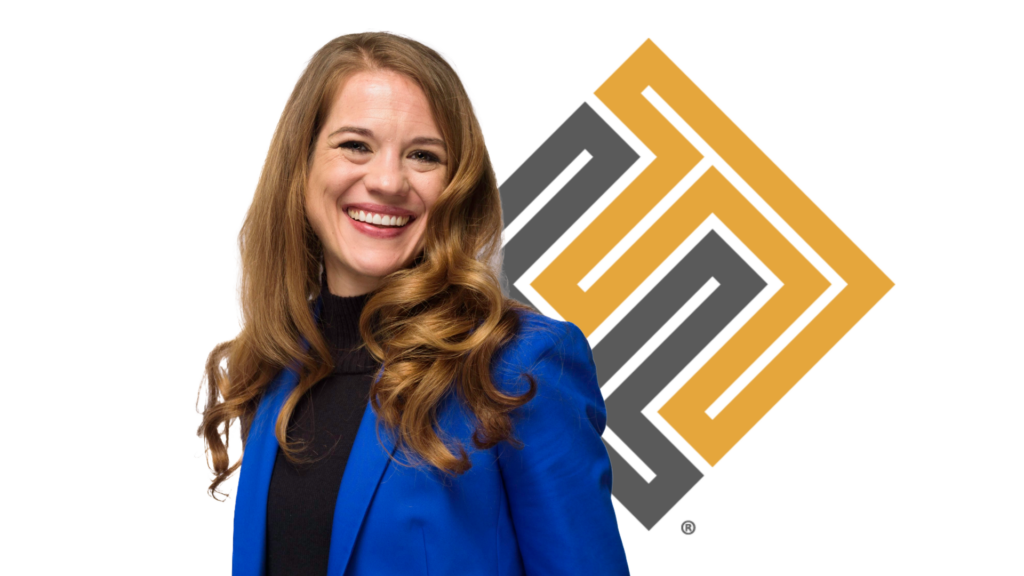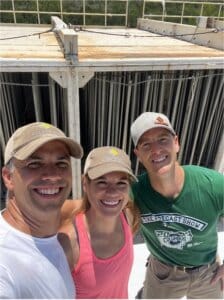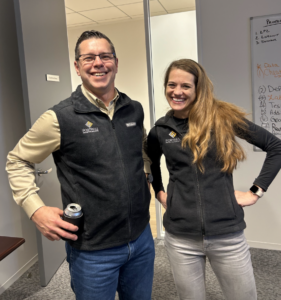On the Right Track: A Purpose-Driven Pace

How Karen Vilas, President of FORTRESS Protective Buildings, Turned Competition into Leadership and a Legacy in Safety
Introduction
Some leaders lean on titles. Others assert authority. Karen Vilas leads through action, always putting people and purpose first. You won’t hear her talking about accolades or accomplishments unless it’s in the context of the people who helped along the way. At her core, Karen believes leadership is not about standing in front, it’s about lifting up others.
Her journey, from childhood to the C-suite, is proof that success isn’t just about intelligence or expertise. It’s about resilience, adaptability and knowing when to roll up your sleeves and get to work. More than anything, she’s built her life and career on the philosophy that “If serving is below you, then leadership is beyond you.” It’s a belief that has guided her through every challenge, every opportunity and every risk she’s taken.
Early Influences
Karen’s approach to leadership started long before she stepped into an executive role. She grew up on a farm in Appalachia, where hard work wasn’t optional. It was a way of life. She learned early on that there’s no substitute for showing up, doing the work and figuring things out along the way. Solving unexpected problems and working through challenges were all part of the daily routine, shaping a mindset that would serve her well in engineering and leadership.


Her brother was both her greatest competitor and best friend, a standout football player who naturally drew attention. The local newspaper often covered his achievements, and when Karen won the state championship in cross country, the headline referred to her as his sister. She never begrudged the attention he received; instead, she used it as motivation, pushing herself harder. Whether it was sports, school or just everyday challenges, he pushed her to be better, faster and tougher.
That drive led her to the University of South Carolina, where she was awarded the four-year McNair Scholarship, founded by Houston-based philanthropist Bob McNair. As part of the academic scholarship process, she met Dr. Michael Amiridis, then the dean of the School of Engineering, who would play a pivotal role in shaping her future. During their conversation, Dr. Amiridis recognized her natural aptitude for math, science and chemistry and guided her toward the field of chemical engineering and related work in his catalysis lab. His belief in her abilities gave her the confidence to step into a demanding field. On weekends and during summers, she immersed herself in hands-on research under his mentorship, balancing that intense academic workload with her collegiate track career. Looking back, Karen credits him with recognizing her potential before she saw it herself. His encouragement set her on a path she fully embraced and never regretted.


Among numerous accolades, Karen graduated Summa Cum Laude and was named Woman of the Year Runner-Up, not just for her academic and athletic achievements, but for her ability to bring people together and push them toward success.
Her greatest lesson wasn’t found in textbooks or trophies, but in a wake-up call in Dr. Vincent Van Brunt’s process safety course. One day, he entered the classroom, slowly walked to the front, and without warning, ripped open his button-down shirt to reveal a hand-drawn Superman “S” on his chest. He scanned the room and asked, “Do any of you have an ‘S’ on your chest? Of course not. And neither did the three workers who died in an accident last week.” The message was clear: process safety wasn’t just theoretical; it was a matter of life and death. That realization shifted Karen’s focus from research to industrial safety, determined to make a difference. Her resolve deepened when she learned about the BP Texas City explosion, a tragedy that exposed critical gaps in hazard protection. Through that experience, she was introduced to BakerRisk, which set her on a course to make workplaces safer, smarter and more resilient. That connection opened the door to her first role at BakerRisk, where she would gain invaluable hands-on experience addressing real-world safety challenges across industries.
From BakerRisk to Oxford to FORTRESS: Closing the Safety Gap
Karen’s early career at BakerRisk was a deep dive into the realities of process safety on a global scale. She worked alongside top industry mentors, gaining firsthand experience with different industries, cultures and risk management approaches. Traveling the world, she saw not only the devastating consequences of industrial accidents but also the limitations of existing protection measures. It was an eye-opening period and one that reinforced her belief that ways of mitigating operational risks needed to evolve.



While at BakerRisk, Karen became increasingly aware of a critical gap in process safety—global inconsistencies in regulations and risk management approaches. Working with companies worldwide, she saw how safety standards varied drastically depending on location, creating challenges in effectively protecting workers. She wanted to bridge that gap, creating a more consistent, effective approach to safety across borders. Determined to address this challenge, Karen decided to expand her expertise beyond engineering. She took an 18-month leave from BakerRisk to earn an MBA at the University of Oxford, focusing on how corporations balance safety, risk allocation and operational priorities. Her application essay centered on these inconsistencies and how to help companies navigate them more effectively.
After completing her MBA, Karen returned to BakerRisk, spending time in their UK office to further develop her international experience. It was during this period that BakerRisk began exploring the concept of FORTRESS Protective Buildings. With her expanded business acumen and technical expertise, Karen played a pivotal role in shaping the vision for FORTRESS.
Making the leap from idea to reality, Karen spearheaded the transition, bringing together a team of experts to engineer a solution that didn’t just meet regulatory standards but truly protected lives. FORTRESS introduced breakthrough innovations, including modular reinforced concrete structures, integrated breathing air systems and designs that accounted for multiple hazard types, setting a new benchmark in industrial safety.
One of her proudest moments at FORTRESS came during a high-stakes project that required precision, teamwork and adaptability under extreme conditions. The challenge? Lifting multiple multi-hazard resistant building modules approximately 180 feet into the air and placing them on a prepared pad within an active industrial facility—without disrupting critical operations or compromising safety. The execution required meticulous planning, coordination among multiple stakeholder teams and adaptation to environmental and technical challenges, including high winds and last-minute adjustments to misaligned connection points. In the end, the lift was completed safely and efficiently.



“That was proof of concept, proof of who we are and what we do,” Karen recalls. It was more than just a successful lift—it was a defining moment that solidified FORTRESS’s reputation for pushing boundaries and delivering protection and safety without compromise.
Leadership, Mentorship & Building Stronger Teams
For Karen, leadership has never been about titles or authority—it’s about people. From her early days in engineering to leading FORTRESS, she has built teams around one guiding principle: surround yourself with smart, driven people and support their success.
Navigating a male-dominated industry came with challenges, but Karen never let that define her path. Instead, she focused on learning, contributing and proving that knowledge and capability speak louder than assumptions.
Mentorship has played a pivotal role in her career and she’s committed to paying that forward. She remains actively involved with the University of South Carolina, mentoring young engineers and encouraging future leaders to trust their instincts, take risks and embrace challenges. She believes diverse perspectives create stronger teams and the best leaders know how to listen.
“Everyone brings something unique to the table,” she explains. “If you’re not willing to build a team with those unique perspectives, you’re going to be less effective.”



Beyond technical expertise, Karen emphasizes communication as one of the most valuable leadership tools. Whether addressing executives, engineers or field workers, she has learned to tailor her message to different audiences, ensuring clarity, connection and alignment on key goals.
At FORTRESS, she’s built a culture of collaboration, where every project, challenge and success is shared. To Karen, leadership isn’t about being in charge; it’s about creating an environment where people can do their best work.
Looking Ahead
Karen has never settled for the status quo. She sees every challenge as an opportunity and remains focused on advancing safety and innovation, ensuring workplaces evolve with emerging risks.


For her, the drive to protect lives is what makes the work meaningful. “It’s easier to stay motivated when protecting people and saving lives is your driver,” she says. As industries change, Karen remains committed to finding smarter, more effective solutions that keep people safe—not just today, but for the future.
Closing Thoughts
Karen has never sought titles or recognition—only meaningful impact. She has spent her life taking action, pushing boundaries and making decisions that put people first.
The legacy she hopes to leave isn’t just in safety innovations, but in inspiring others to be deliberate in their choices, to focus on what truly matters and to create something that lasts. In her words, “I want my actions to speak for themselves.”

